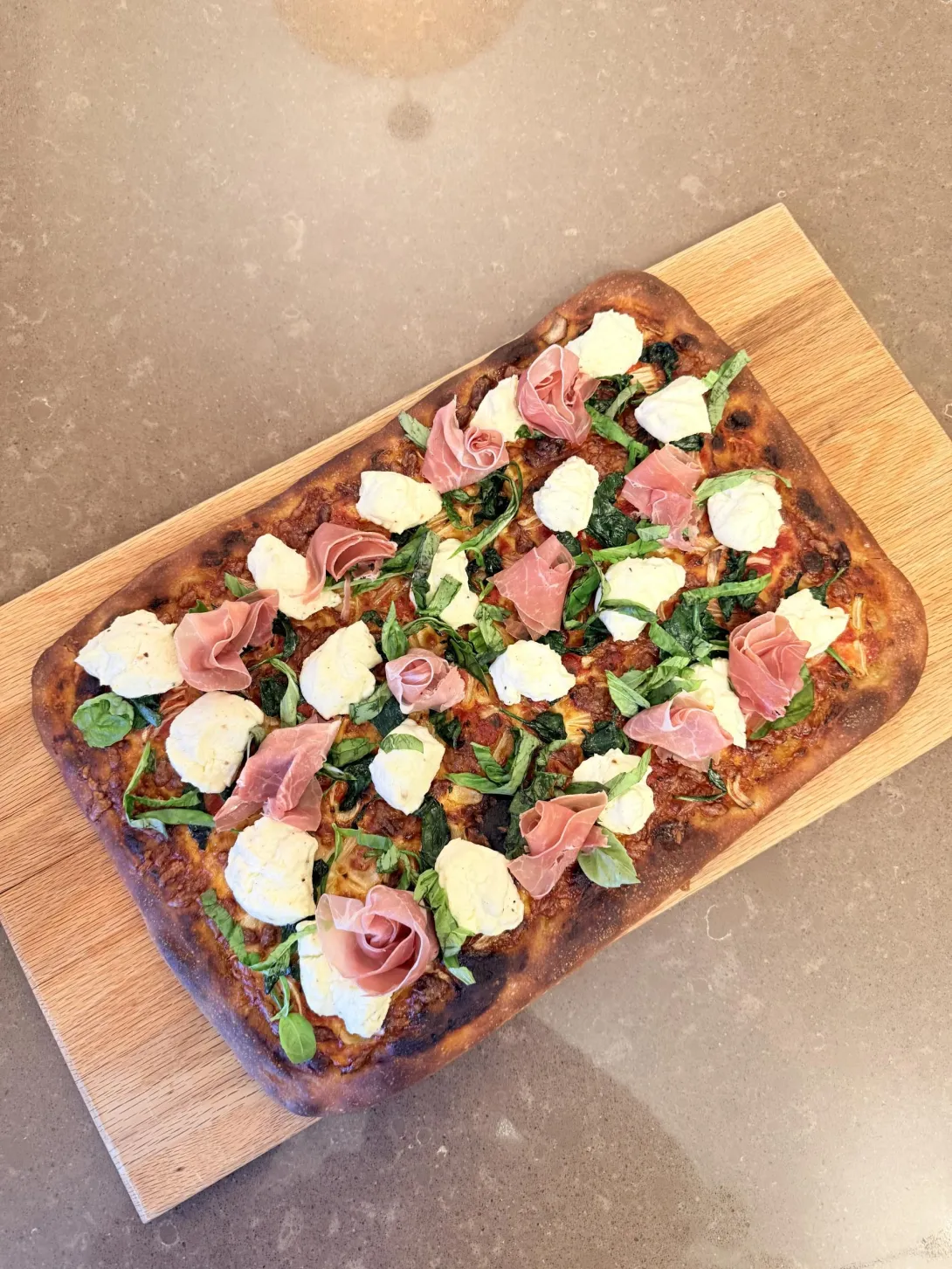
I saw a recipe for a rose pizza sauce and followed that as an idea for this pizza with some changes. I prefer prosciutto to genoa salami and added sautéed spinach for some extra colour. I’m quite pleased with how this turned out. The whipped ricotta was lovely, if I were to make it again I’d add lemon zest to the whipped ricotta to make it a bit more complex.
This is the second time I am making this Roman Pizza formula of mine. It uses 40% prefermented flour and a tangzhong. The idea behind the tangzhong is that a home oven takes a long time to bake a pizza. Pregelatinzing some of the flour will help the crumb of the pizza keep more of the moisture it might otherwise bake out during the long bake times of a home oven.
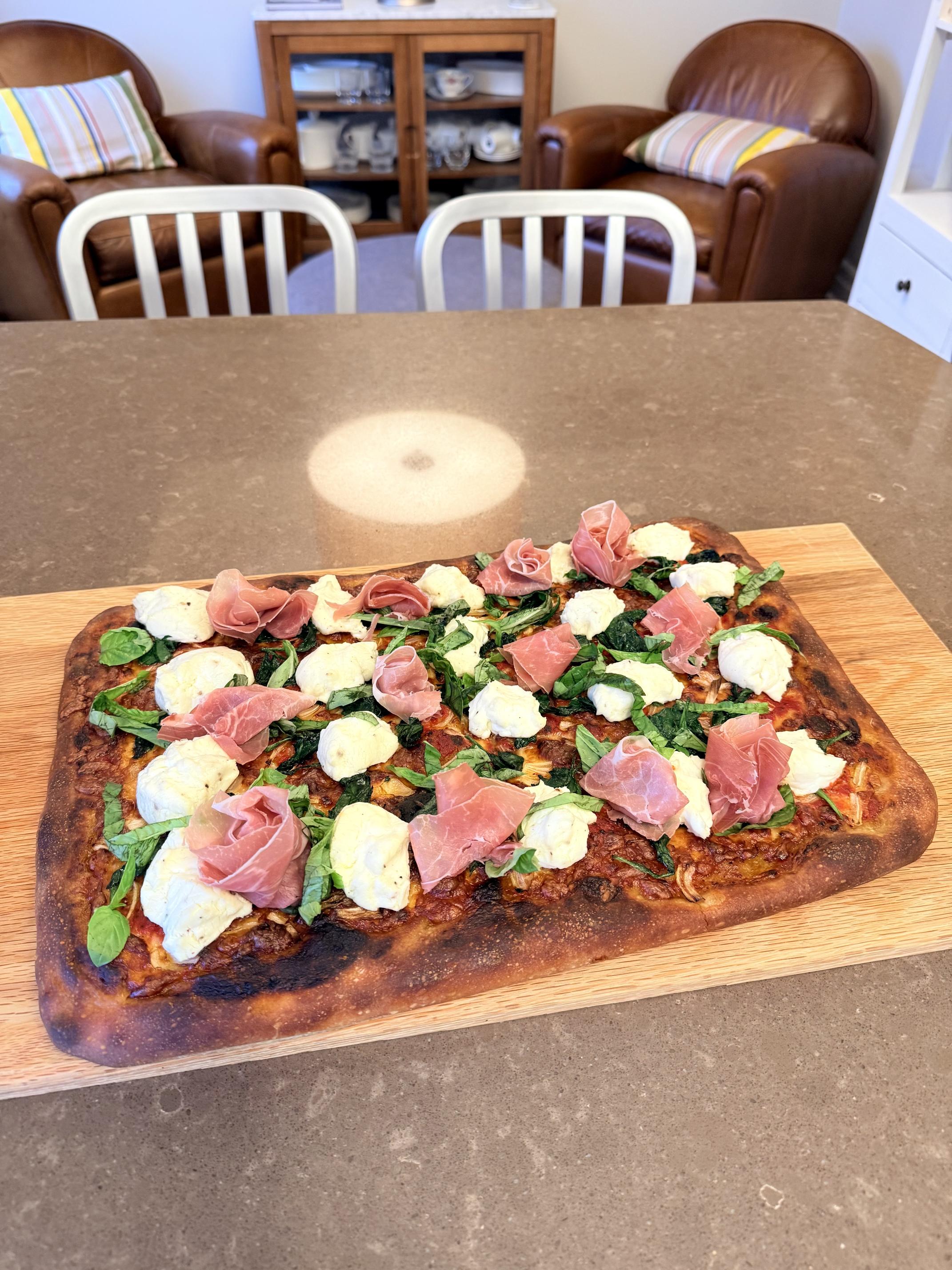
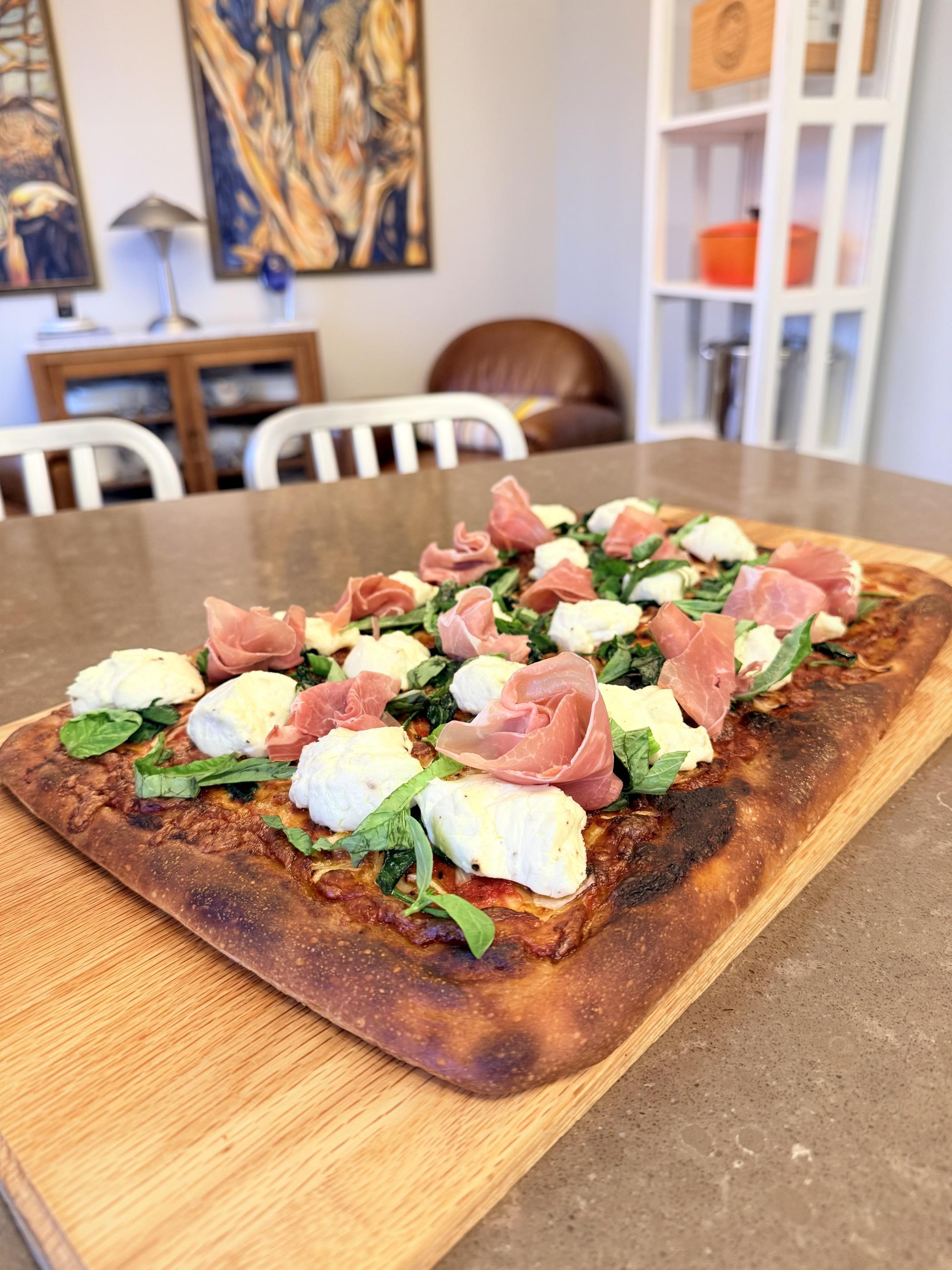
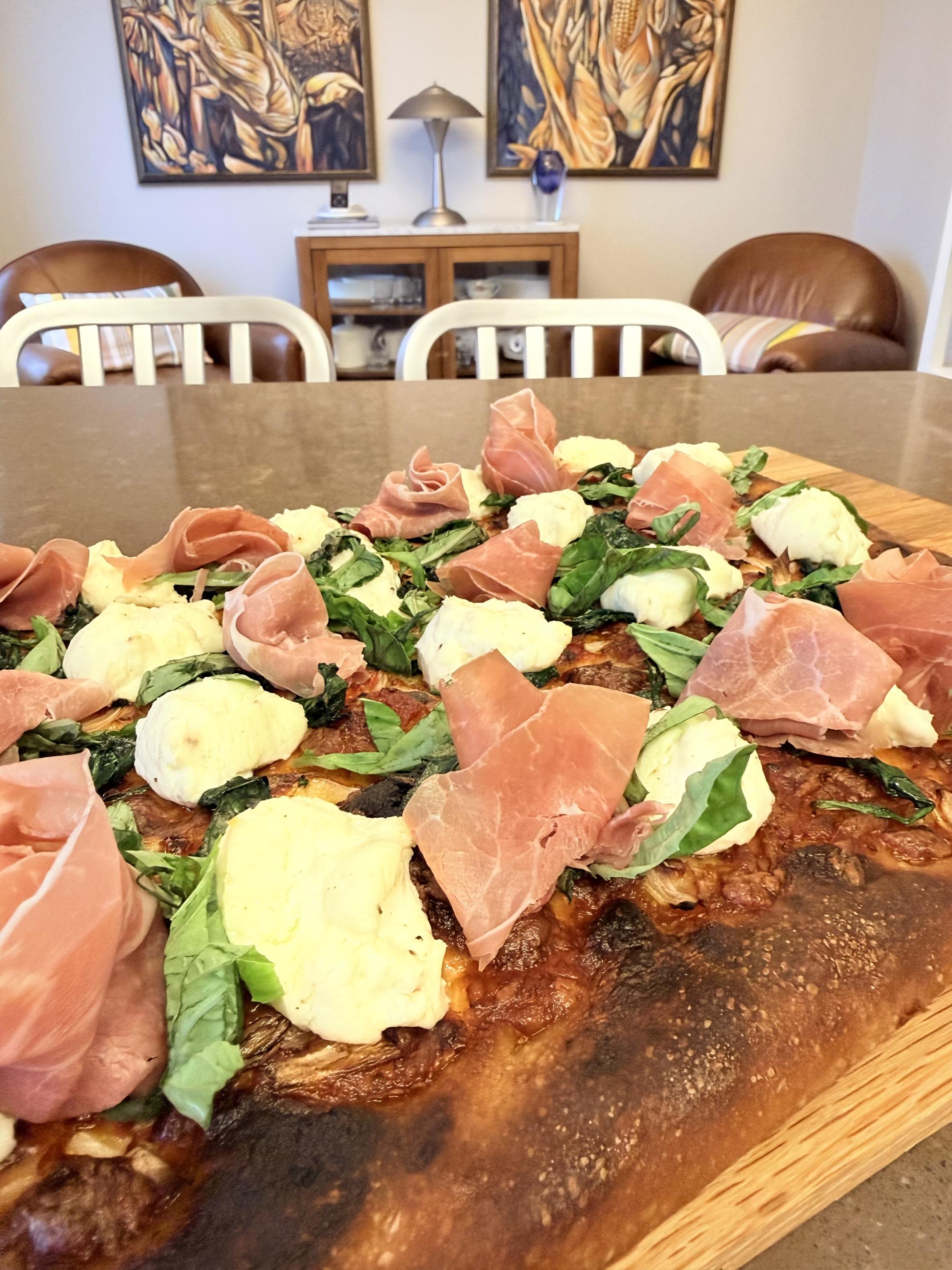
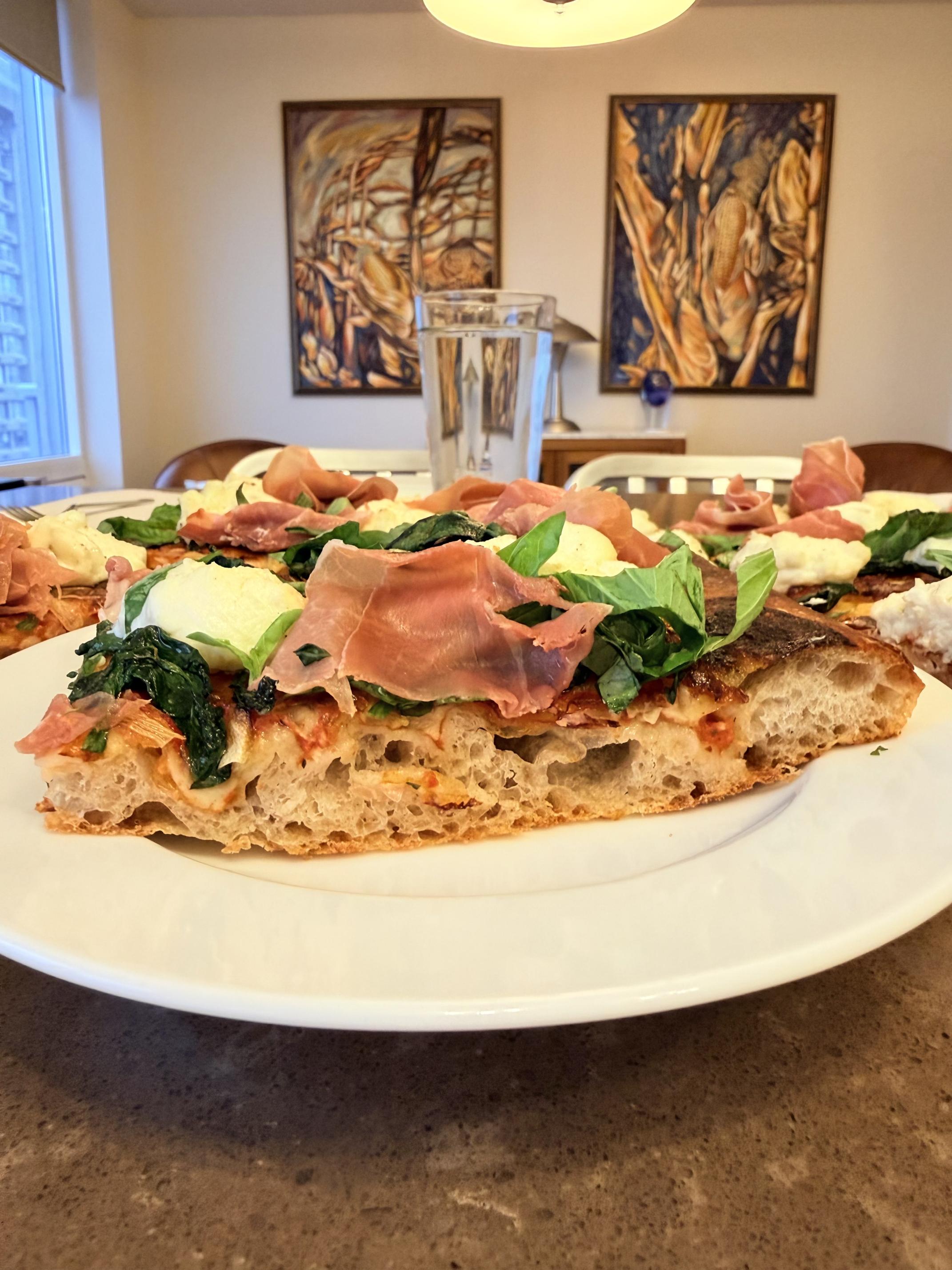
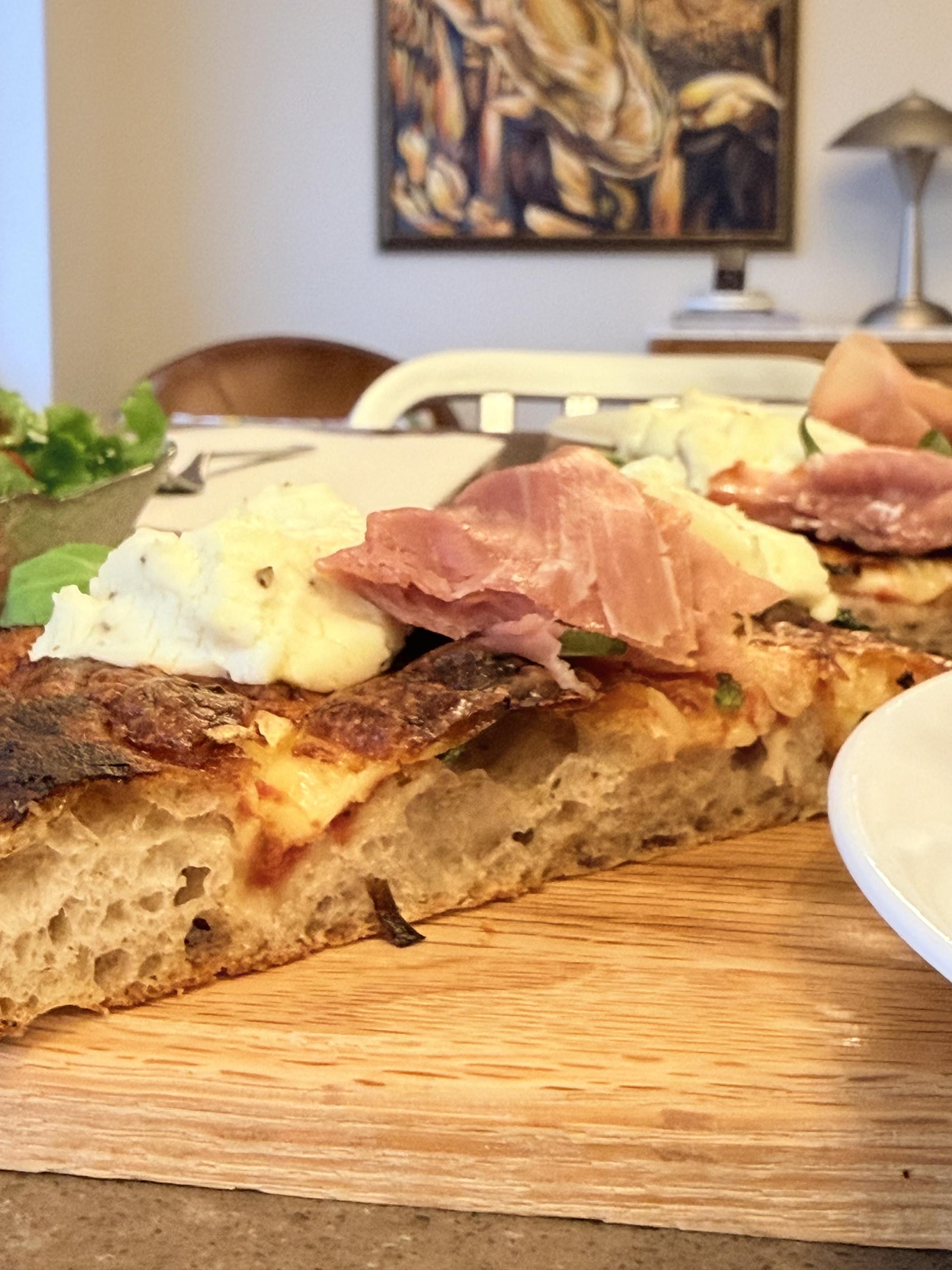
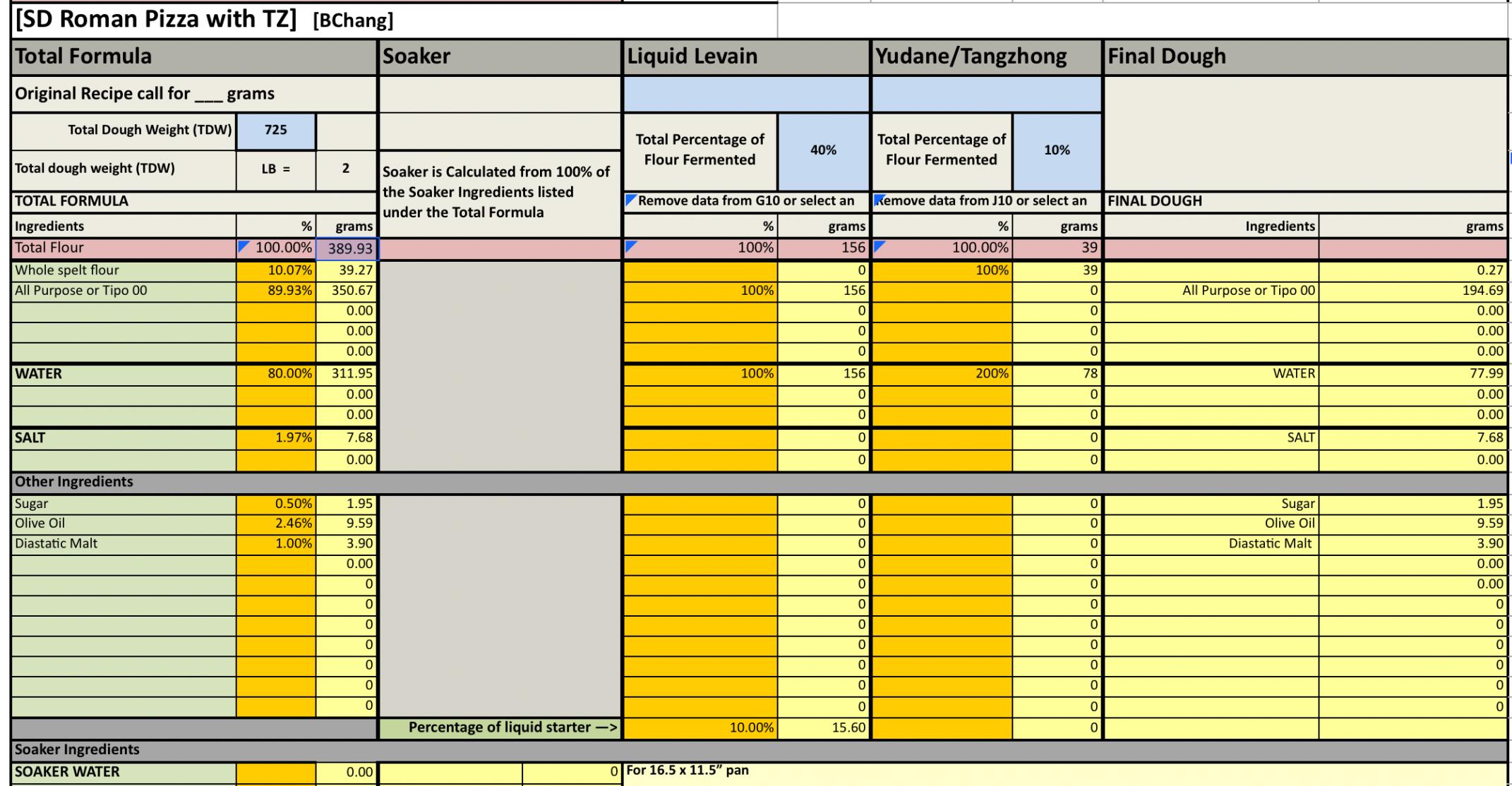
For 16.5” x 11.5” pan
WHIPPED RICOTTA
1 cup (250 mL) smooth ricotta
1 tbsp (15 mL) extra virgin olive oil
1 tsp (5 mL) heavy cream
Salt and freshly ground pepper to taste
ROSÉ SAUCE
1 can (796 mL) whole Italian tomatoes, preferably San Marzano
2 large basil leaves
Pinch salt
½ cup (125 mL) dry rosé wine
¼ cup (60 mL) heavy cream
¼ onion finely sliced.
1-2 cups of spinach, sautéed
100 g of prosciutto
For the whipped ricotta, combine ricotta, oil and cream in a food processor. Blend until smooth. Season with salt and pepper. Scrape mixture into a bowl. Cover and set aside.
For the sauce, purée tomatoes and their juices, basil and salt in a food processor. Transfer to a medium-size saucepan over medium heat. When mixture just comes to a boil, stir in wine. Return to a slow boil. Reduce heat to low and cover. Cook, stirring occasionally, for 30 minutes. Remove from heat and stir in cream.
Lightly sauté spinach to wilt and partly cook.
Overnight levain
Duration: 12 hours (overnight) at warm room temperature: 74°–76°F (23°–24°C).
Tangzhong
In a sauce pan set on medium heat, stir the water and whole spelt flour until blended. Then cook for several minutes until well thickened, stirring regularly with a spoon or heat-resistant spatula. Let cool in the pan or, for faster results, in a new bowl. Theoretically it should reach 65ºC (149ºF) but I don’t find I need to measure the temperature as the tangzhong gelatinizes at this temperature. You can prepare this the night before and refrigerate it, ensure that it is covered to prevent it from drying out.
If you plan on using a stand mixer to mix this dough, set up a Bain Marie and use your stand mixer’s bowl to prepare the tangzhong.
In the morning mix the dough when the levain is at peak. To the bowl of the stand mixer add water, salt, sugar and diastatic malt, stir to dissolve. Add the tangzhong/Yudane cutting it into small pieces. Then add the levain, stir to dissolve. Add the tangzhong and break it up into smaller pieces. Finally add the flours. Mix on low speed until there is no dry flour then increase to medium and mix until the dough is moderately developed. Then slowly drizzle in the olive oil stopping until each addition is incorporated. Finally mix until good gluten development.
Remove the dough from the bowl and do a bench letterfold. Transfer the bowl to an oiled bowl for bulk fermentation.
Allow the dough to rest until it reaches 40-50% rise.
Optional cold retard. Place the dough in the fridge until the next early afternoon. This is done primarily for convenience.
Once the dough reaches 50% rise proceed to shaping or cold retard then shaping.
Shaping
Oil the baking pan lightly and brush the bottom and the sides with the olive oil.
Thoroughly flour the top of the dough in the bowl, release it from the sides of the bowl using a bowl scraper then flip it onto the counter. Flour the exposed dough well with flour and flour the counter around the sides of the dough well. Using your bowl scraper push some of that flour under the edges of the dough.
Using your hands, get your fingers well under the dough and stretch it out into a rectangle. Next using your fingers gently press them into the dough to elongate the dough. Flip the dough over and repeat aiming to get the dough to about 75% of the area of the pan.
Transfer the dough to the oiled pan by folding it in half and unfolding it once in the pan. Gently stretch the dough out to touch the edges of the pan. If it resists stretching, wait 15 mins and try again after the gluten has relaxed.
https://youtu.be/VWfvaNGmVAc?si=s-WkoO49wG03zsRc
Aim to bake the pizza once the total rise is 170%. About 1 hour prior to baking pre-heat the oven to 500°F placing your baking steel on the lowest rack of the oven.
Bake the pizza.
Drizzle olive oil onto the dough. Then using a large spoon, spread a thin layer of pizza sauce over the dough from edge to edge. Slide the baking pan into the oven on top of the baking surface. Decrease the oven temperature to 425°F (220°C) and bake for 10 minutes. Transfer the pan to a wire rack and sprinkle on the grated cheese, then put teaspoon dollops of sauce on the cheese. Top with the onions and spinach. Slide the sheet pan back into the oven on the baking surface and bake for 15-20 minutes more. The cheese should be melted and the bottom crust well colored. Remove from the oven.
Dollop pizza with whipped ricotta. Sprinkle basil. Place clumps of prosciutto onto pizza.
We really enjoyed having some of this pizza for dinner. The crust stayed delightfully crispy yet not dry inside. Despite all of the rose pizza sauce it didn’t make the crust wet. The ricotta was very very creamy and paired well with the prosciutto and spinach.
- Benito's Blog
- Log in or register to post comments
That’s a beauty. I love ricotta and will definitely have to try that and the Rose’ sauce.
Prebaking with the sauce really seals it very well. I always do it too.
Love the presentation beautifully done Bennie. c
Great minds think alike Caroline. Funny that we both had ricotta in our bakes yesterday.
Benny
+1 to trailrunner's comment! Fantastic result!
I never managed to bake a decent pizza in a regular home oven (max 250ºC). One that is at least half as good as the ones I bake in the pizza oven. This recipe will be for sure my next (pizza) bake in the home oven. Thanks for the detailed recipe and process.
Thank you Sparkfan, I’ve never had a pizza oven to bake a pizza in. I’d love one, but cannot have one in our condo. I hope you do try this pizza, it was quite different from any other that I’d baked before and we loved it. But do add some lemon zest to the whipped ricotta.
Benny
This really is picture perfect and visually stunning. I can only imagine how wonderful this must have tasted. Reminds me to start making pizza again. I’ve been meaning to make some pan pizza for a while and yet to do it.
Thanks for sharing such an inspiring bake!
Ian
Thank you Ian, I’m glad I am able to inspire you at times. You are such a creative baker, your bakes are always inspiring.
Benny
Very artistic, as is par for the course, for Benny!
Thank you Will, that is quite a compliment coming from the Pie King himself!
Benny